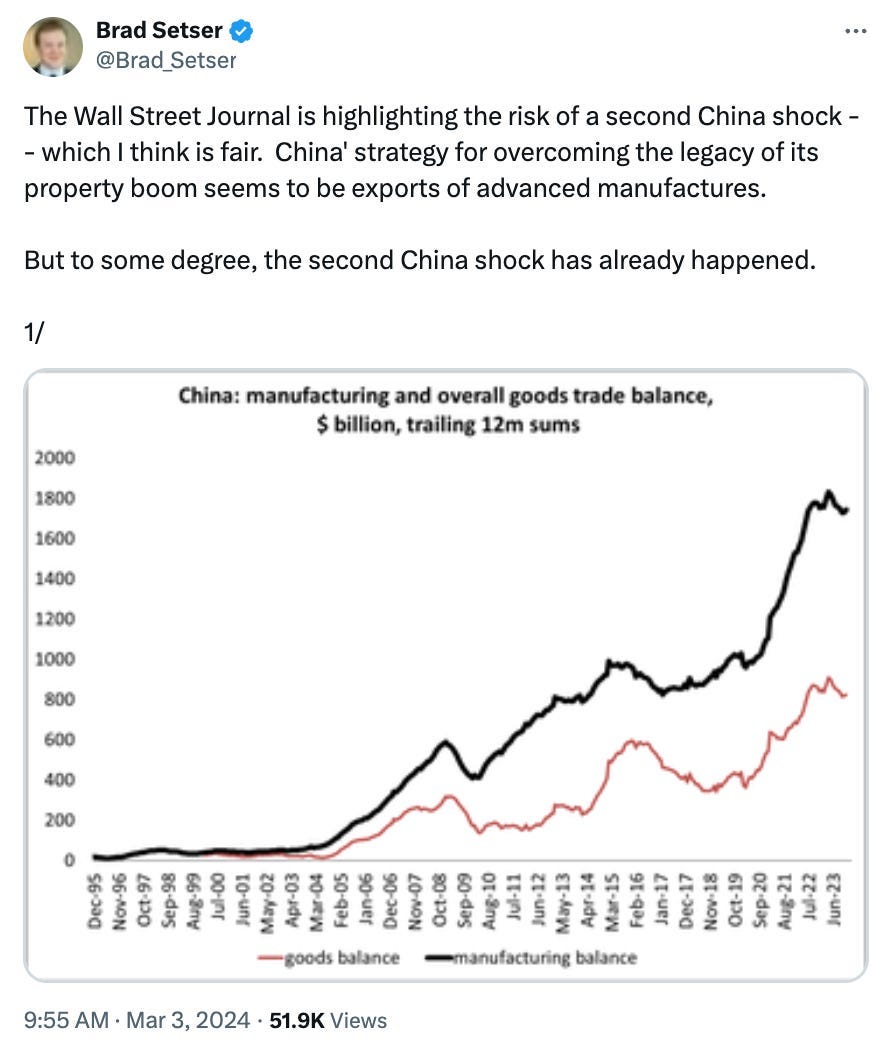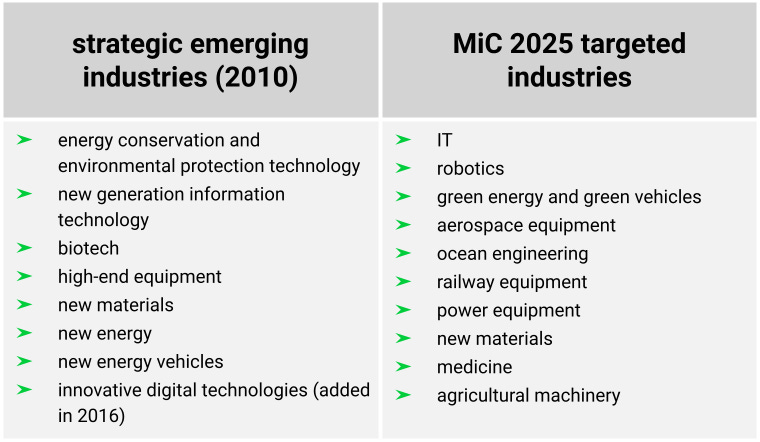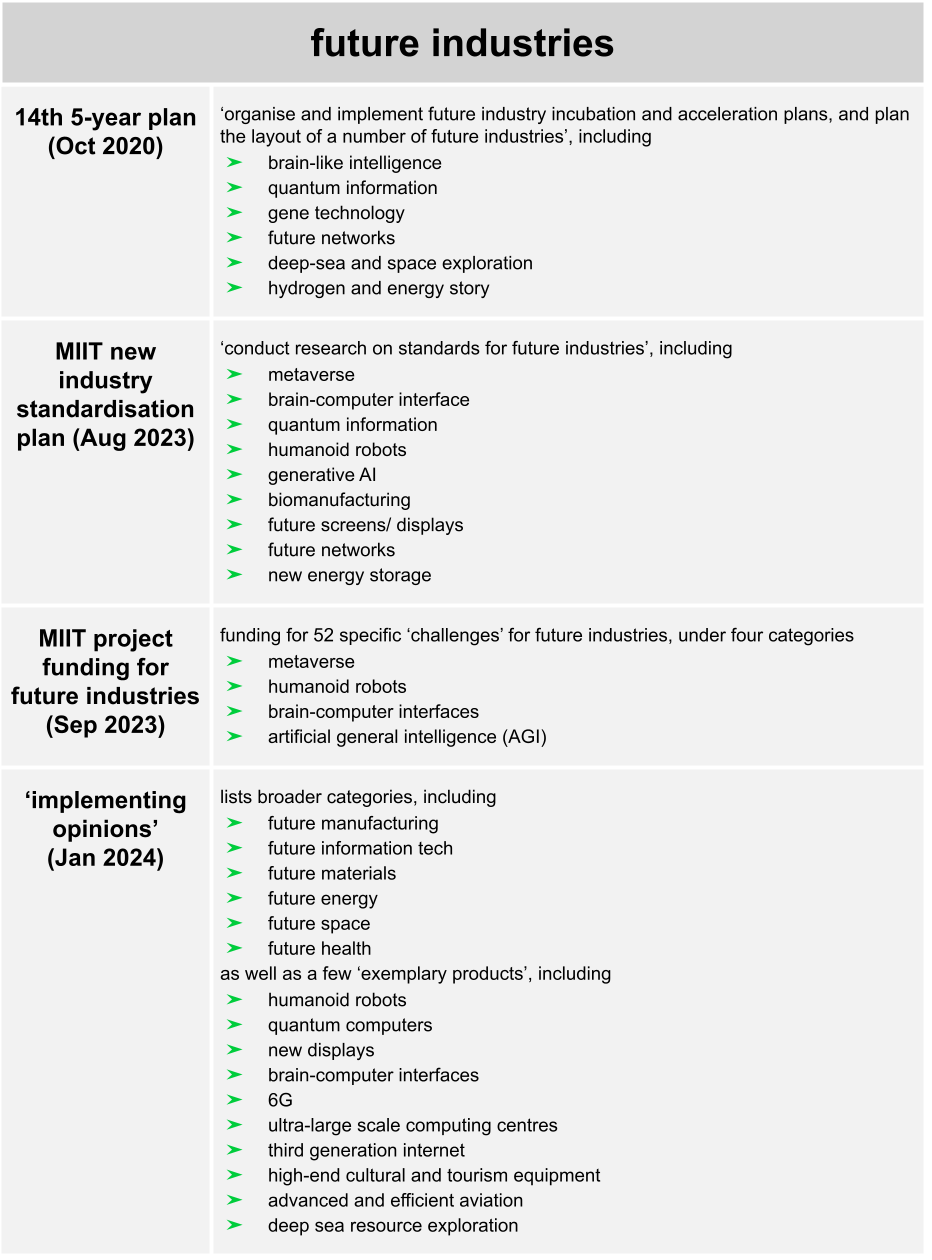PREAMBLE
Thursday last, the People's Daily has an interview with Chen Binkai, Assistant to the President and Dean of the School of Economics at Central University of Finance and Economics titled "Shaping New Advantages in High-Quality Development with the Development of New Productive Forces".
The full translation is here in Google docs.
In another commentary from the new issue of Qiushi titled “Deeply Understand and Accelerate the Development of New Productive Forces” -places Xi’s contribution to the Marxist theory of productive forces in a progression from Mao’s liberating productive forces to Deng’s developing productive forces and now to Xi’s contribution.
The New Productive Forces are of dynamic dimensions that shall be bringing ensuing competitiveness challenges and concerns to hit upon The West neo-liberalism-is-imperialism ethos and praxis.
Read the presented principles that follow:
04 Mar 2024
what are future industries?
The Two Sessions starts today, 4 March. There will be the usual crop of new buzzwords. We are likely to be hearing a lot about ‘Future industries’ and the ‘New Productive Forces’ (as explained last week). We hope these explainers help.
The term ‘future industries’ (FIs) was first noted in the 14th 5-year plan (2021–25). The state, it said, would ‘layout a number of future industries’. A definition emerged in late January 2024 'Implementing opinions’ from MIIT (Ministry of Industry and IT) and a swathe of central agencies:
Driven by cutting-edge technology, FIs remain embryonic or at early stages. They are emerging industries with major strategic, leading, disruptive, and uncertain hallmarks. Vigorously developing them is a strategic choice to lead in tech progress, drive industry upgrading, and cultivate new, high-quality productivity.
context
Under its commitments on accession to the WTO in 2001, the PRC pledged to move towards a market-oriented economy. Meanwhile, it actively pursued industrial policy, a deliberate effort to catch up with and leapfrog global leaders in select sectors. A long-term scitech plan spanning 2006–20, urging ‘indigenous innovation’, marked a major turning point.
The focus was on growing the economy through technology upgrades and innovation, not low-cost manufacturing. It proposed focusing on developing eight technical areas, 27 cutting-edge technologies, and 16 'megaprojects'. Initially, the plan had meagre financing, favouring low-hanging fruit, with a critical role for foreign investment and know-how.
With the onset of the global financial crisis in the late 2000s, the PRC responded with a legendary stimulus package and a more hands-on approach. Emphasis pivoted to cultivating SEIs (strategic emerging industries), championed by the planning agency NDRC (National Development and Reform Commission). Policy texts proliferated, aimed at bolstering and nurturing these nascent industries. After more than a decade, the outcome is deemed a massive success. For instance, NEVs (new electric vehicles), photovoltaics and batteries were supported.
SEIs speak to the long-held ambition to transform the country into a high-quality, manufacturing great power. This was also the aim of ‘MiC 2025’ (Made in China 2025), a policy that made international headlines when launched in 2015 as it targeted global market share. It was subsequently dropped from official PR in 2019. The aim has since morphed into pursuing self-reliance in critical emerging tech, with an ecosystem centred on the PRC. FIs, unlike MiC 2025, are to make the PRC an innovation great power: the quest has advanced from reducing global tech and innovation dependency to fostering a super-innovation ecosystem.
what is a future industry?
Relying solely on SEIs to sustain PRC industry would fail in the long run, advised an early 2023 CASISD (Chinese Academy of Sciences Institutes of Science and Development) study commissioned by NDRC's Innovation and High-Tech Development Department. Developing FIs is now imperative.
In September 2023, on an inspection trip to Heilongjiang, Xi Jinping sounded the gong for ‘new productive forces’ and the related FIs term.
The industries termed FIs are not the same in all policy documents (see table below). SEIs initially consisted of a discrete list of seven prioritised sectors (revised once in 2016). FEIs are less clearly defined.
FIs may be framed as extensions of SEIs. The latter, e.g. green tech and NEVs, are rapidly scaling up production and competing for global shares and leadership, becoming new growth drivers. FI tech and business pathways are far less certain; global leaders have yet to emerge.
The point of SEI and FIs, beyond being desirable future industry and growth drivers, is now to harness the ‘new productive forces'. A January 2024 Politburo study session proclaimed an upgrade to the longstanding Marxian doctrine of ‘productive forces', the issue being to boost total factor productivity, long seen as stagnant at best. The ‘new’ forces are to leverage technology and data, the less resource-intensive factors, rather than the traditional input of labour, land and capital.
The diagram below maps out the ecosystem of new policy terms, as imagined by Liu Dian 刘典 Fudan University China Institute.
agency oversight
The Central Science and Technology Commission, in place since 2023's Two Sessions, will direct the set-up of FIs, states the new 'Implementing opinions'. It will work closely with the ‘National Leading Small Group for Building a Manufacturing Power’, initially set up to roll out the MiC 2025 agenda. Notably, as MiC2025 vanished from the public agenda, so did the leading group, and it seems to have only been resurrected with the emergence of FIs. Inter-ministerial and centre-local government working groups will support it.
NDRC and MIIT manage the program on a daily basis. NDRC director Zheng Shanjie 郑栅洁 foreshadowed the upcoming selection of a group of FIs and FI pilot zones in the summer of 2023. In September 2023, MIIT pledged funding for 52 R&D projects for four FIs (metaverse, humanoid robots, brain-computer interfaces, artificial general intelligence. Its novel funding protocol features
top-down definition of specific ‘tasks’ (by ministries or central SOEs)
decentralised competition for ‘solutions’ (enterprises, campuses, research institutes can all apply)
This will hopefully help form agile industrial clusters, where many SMEs fill niches supporting large enterprises (primarily SOEs).
funding sources
FI funding may come from a range of state or non-state sources rather than from direct subsidies, not least GGF (government guidance funds). A new GGF devoted to SEIs and FIs raised C¥31.5 bn in July 2023. Such cases will likely multiply.
Localities have followed up, proposing plans for FIs at their Two Sessions in early 2024. The National Two Sessions will likely sketch more priorities.







